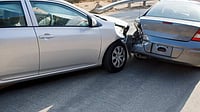High or Low Excess for Your Car Insurance Plan: What’s Best?
motor
Car troubles have the uncanny ability to pop up when you're least prepared for them and often occur when you're short on time and money, leaving you scrambling frantically to get back on the road again. With a high inflation rate and living costs soaring, you'll want to bypass experiencing financial uncertainty when choosing car insurance. But before you start looking for affordable car insurance options, have you considered your car excess? What is excess in insurance?' Discover more about car insurance excess as Auto & General Insurance discuss this topic more.
What is excess in car insurance?
Car insurance operates straightforwardly. You pay a set amount monthly to cover your car in the event of a car accident or damage. This amount is calculated based on your risk profile, including factors like the type of car you drive and your age. Individual factors aside, insurers recognise that people will have different needs regarding coverage and affordability and have customised their car insurance products accordingly.
Another choice car insurers offer customers is different car insurance excess levels. Your car excess insurance[1] is the threshold value above which your insurer will pay for any valid claim lodged. It means you'll need to pay for any claim you make under your chosen excess value with your own funds.
You can choose a higher excess level with a lower monthly premium and vice versa.
Giving you a choice over the excess you pay benefits you beyond giving you more control over how much you spend on your monthly premiums. You decrease your overall risk as you take on more risk with a high excess and are less likely to submit claims. This shows your insurer your willingness to shoulder some of the financial responsibility in the event of a claim. The second benefit is that a higher excess incentivises you to be a more cautious driver. Damaging your car when you have a high excess threshold means you may have to dip into your savings to cover the costs of repairs.
How your car insurance excess affects your premiums
Here's an example of how high or low car insurance excess thresholds can benefit different drivers:
After years of hard work, Thandi has finally been promoted. She gifts her old hatchback to her sister and gets the premium sports car of her dreams. Because she now owns a high-end car brand, Thandi chooses a low excess and higher monthly premium for her car insurance because she knows that her new car repairs will likely be high in the event of damage.
Thandi's sister Tina is starting her first job and is on a tight budget. She elects to insure her inherited car with a higher excess and lower premium. This keeps her monthly premium costs low, and if she'll need to repair her car, she's prepared to pay out of pocket with her savings.
Factors to consider when choosing car excess insurance
Many ask, "Is it better to have a higher or lower excess insurance?" This depends on your personal situation and needs.
Some factors can help you decide:
● Your budget and cash flow — keeping up with your premiums is critical, and an inappropriate excess could impact your ability to do this. A stable salary can manage higher premiums, while a lack of savings could prove financially challenging should you choose a higher excess.
● Your risk profile — a higher risk profile means you are more likely to make a claim. If you live and work in a high-risk area or spend a lot of time on the road, your car will face more risks. A lower excess may be better for you if you're concerned about possible smash-and-grabs or potholes ruining your tyres.
Pros and cons of high and low excess levels
Here are some pros and cons associated with a high and low excess:
-
High excess
Pros. With a high excess, you will pay a lower monthly premium.
Cons. A higher car insurance excess means you must have sufficient funds readily available to make a claim. You will also be responsible for paying more out-of-pocket expenses. There is limited coverage for small claims.
Low excess
Pros. A low excess reduces the financial burden of paying additional out-of-pocket amounts for claims. A low excess can also give the policyholder more flexibility in managing their claims.
Cons. Opting for a low excess means you will pay a higher monthly premium.
Get affordable car insurance quotes from Auto & General Insurance
Having a car insurance excess that works for you means having an insurer that gives you options. If your current car insurance provider isn't meeting you halfway, it may be time to switch to Auto & General. Our team of expert consultants is ready to answer any questions you have. Request a quote today to get started.








